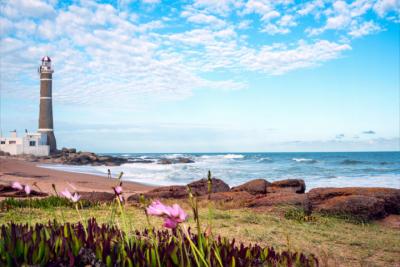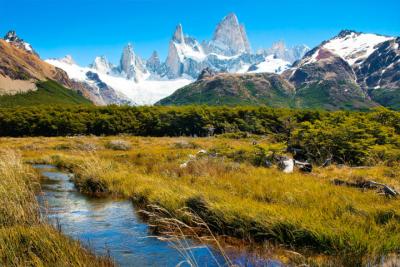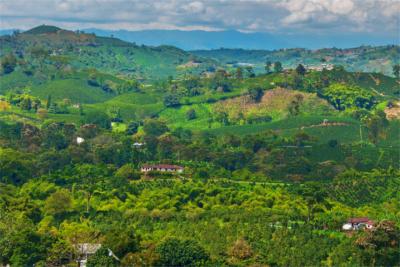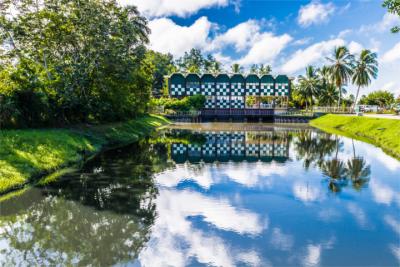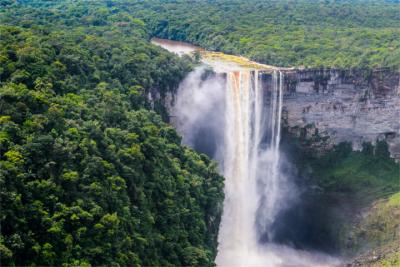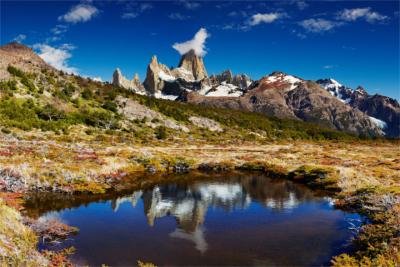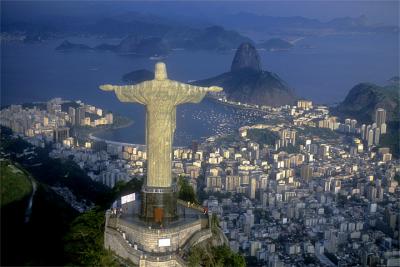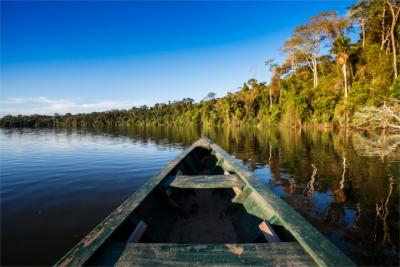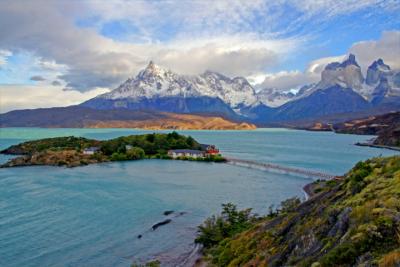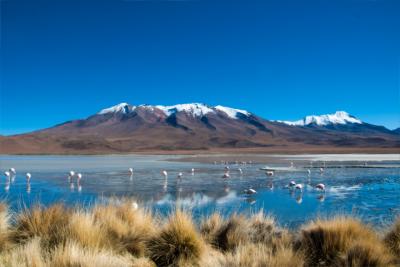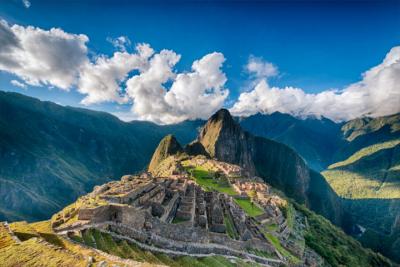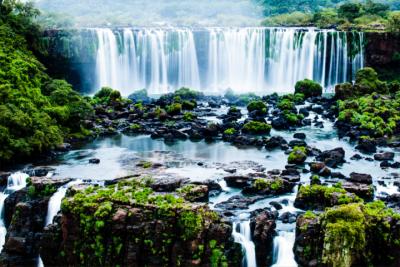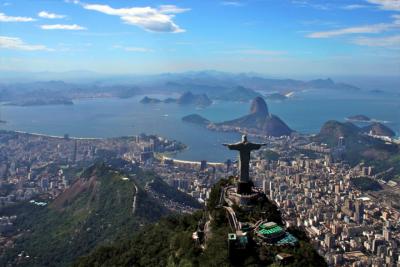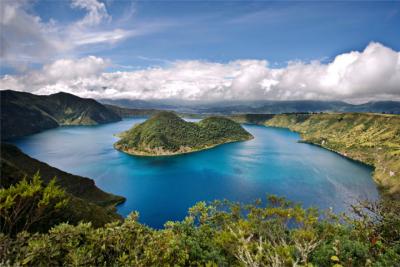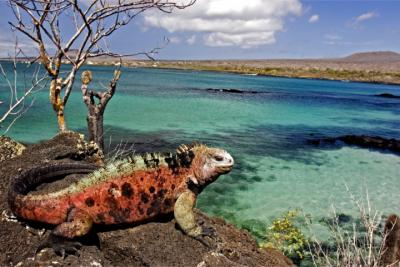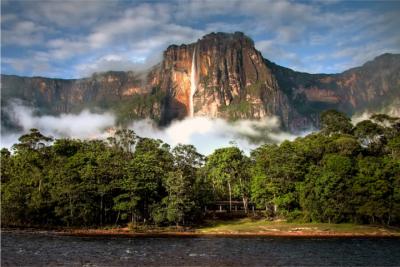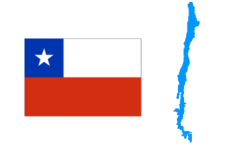Travel Offers
Travelmyne Featureprint
Distance
Chile – From the Atacama Desert to the Tierra del Fuego
Chile reflects the whole diversity of the South American continent. It presents fascinating landscapes from the Atacama Desert to the mountains of the Andes to the gigantic glaciers.

Geography - Very narrow but varied
Along the Pacific coast in the west of South America, Chile stretches to the most southern regions of the continent. The country's north-south expansion is 4,275 kilometres, which corresponds to 39 latitudinal lines. The country is, however, only 180 kilometres wide on an average. Due to its location at the plate boundary, there are many volcanoes and earthquakes in Chile. In the east, the mighty mountain range of the Andes crosses the country. Another mountain range lies at the coast, which changes to a varied fjord and island landscape toward the south. Between the mountain ranges you find Chile's Central Valley. Depending on the region, the country is dominated by desert, mountain, sea or cold subpolar climate.

Nature - Dry desert, wild steppes and icy fjords
The north of Chile is characterised by the inhospitable world of the Atacama Desert. This region, which is one of the driest regions on earth, sometimes does not see a drop of rain in years. Only the phenomenon El Niño occasionally causes falls of rain, which make the desert flourish with lightning speed and become a colourful landscape with flowers. Otherwise only cactuses and small shrubs vegetate this region. In addition, reptiles and snakes populate the dead environment. The desert is followed by vast steppes with open patches of grass and the harsh yareta plants. The fertile areas of the mountains are vegetated by ferns, while the high peaks are covered in snow. Vicuñas (which look like small llamas), deer and Andean condors live in the mountains. Chile's central part around the capital Santiago is characterised by very fertile, Mediterranean areas, in which you find cypresses, pines and larches. Toward the south, the landscape changes to the steppes of Patagonia, which are crossed by a continuous, harsh wind. Guanacos, a species of llama, browse the bleak grassy landscape and on the many lakes you see large groups of flamingos. Even further toward the Arctic Circle the landscape turns into iced glacial regions consisting of fjords and numerous lakes. The island chain Tierra del Fuego is separated from the mainland by the Strait of Magellan and belongs to both Chile and Argentina. Despite the cold, harsh climate, this region has an unbelievably diverse environment. The coast, steppes, moss-grown marshlands and vast forests are populated by guanacos, jackals, South American sea lions, otters, beavers, albatrosses, Southern giant petrels and king penguins.
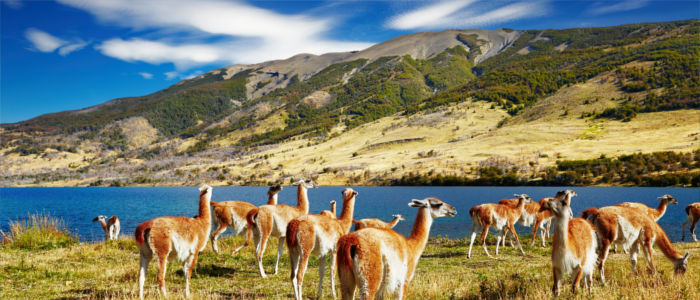
Natural sights - Salar de Atacama and the geysers of El Tatio
The fascinating world of the desert can best be explored from the tourist centre San Pedro de Atacama. There you can make long trips over dunes and bleak plains, swim in salt lagoons or visit the geysers and hot springs of El Tatio. The Atacama desert contains the Salar de Atacama, Chile's biggest and most famous salt lake. An appealing place with regard to landscape is the Valle de la Luna, which is called "valley of the moon" because of its bleak vegetation. It is known for the bizarre salt formations and for the play of colours created by the sunlight, which colours the rocks red at sunset. The valley offers a great view of the volcano Licancabur with its snow cap. Among the country's nature reserves, the Conguillío National Park stands out. It is located at the foot of the active Llaima Volcano and displays untouched forests covered in distinctive araucarians as well as scenic, clear lakes. A visit to the La Campana National Park promises multifaceted insights into Chile's magical landscape. Another attraction which is truly worthwhile is the Torres del Paine National Park, in which you dive into Patagonia's magical, wild nature. Three pointed granite rocks with heights up to 2,850 metres constitute the park's impressive landmark. In this area you also find the gigantic Grey Glacier. Hornos Island lies south of the Tierra del Fuego and its Cape Horn constitutes South America's most southern point. Those who want to watch the bubbling and spitting of an active volcano should visit Villarrica Volcano. In that region you also find the Seven Lakes, a lake district with seven fascinating lakes and many hot springs. In the marine reserve Isla Damas you can watch penguins, dolphins and sea lions. The Valle de Elqui presents an exciting contrast of bleak mountains and a fertile valley covered in vineyards. You can take long trekking tours through the landscape or watch the first rate, clear spangled sky.

Culture - First Native American tribes, then Spanish conquerors
Over the course of centuries, several Native American tribes, most of which formed empires, existed on the Chilean territory. The best known are the Mapuche, which still live in the country today and carry on their traditions. At his attempt to circumnavigate the world, the Portuguese Ferdinand Magellan discovered the southern tip of Chile in 1520. Later on, the country became a Spanish colony. Following a military coup Augusto Pinochet was appointed president in 1973. His dictatorship was characterised by many human right violations. From 1988 on, a democratisation took place. Especially in rural regions, traditions of Spanish and Native American origin still play a major role. Part of these are expressive dances like the Cueca. The huasos, a kind of Chilean cowboys, are also common and show their skills at rodeos.

Cultural sights - Exploring Santiago de Chile, Valparaiso and Arica
Santiago de Chile, the country's capital, emits the typical Latin American sense of life. It is lively and vibrant. This is apparent in many locations for dancing. Santiago embodies Chile's modernity, speed and economic development. It is also a good place for going shopping. The metropolis has a wonderful centre with many historical treasures such as the churches San Francisco and San Cristóbal, the Palace of La Moneda, formerly a mint and now a presidential palace, the hill Cerro Santa Lucía and the Museo de Bellas Artes, which holds a large art collection. Valparaiso is considered one of the most beautiful cities of all. It is characterised by its colourful, artistic houses and the inclined lifts. The latter you can take to reach the city's hills and have a great view of the metropolis and the sea. Valparaiso is also famous for exquisite wines, which are grown in the region and which you can taste on the estate Emilia, for example. In addition, the city has wonderful, scenic beaches and lagoons. A popular tourist destination is also the city Arica, which accommodates great beaches and the famous Cathedral San Marco. South of the metropolis you find the rock El Morro. It was an important guard station of defence for the city in the past. Today several cannons and a museum are placed there. The Chuquicamata, the world's biggest copper mine, is the greatest hole ever dug by humans and is definitely worth a visit. The Very Large Telescope in Paranal is the greatest telescope on earth. If you register beforehand, you can have a look at the fantastic Chilean spangled sky from there.

Experience - Dancing as the paragon of the love of life
The Chileans lust for life is reflected in the dance. Those who want to get to know the people's temperament can do this at one of the many dance events – be it at parties, performances or in clubs, in which the locals celebrate exuberantly. There are many opportunities for going out and having fun. Having traditional food means eating pasties with meat or maize, rice vegetable soup with chicken, dishes made of fish and seafood or fried dumplings stuffed with cheese. You should also try one of the exquisite wines, which are typical of Chile, or the hard liquor Pisco. You can experience Chile's landscape on a cruise through the fjords. Clothing made of llama wool, jewellery or wood carvings serve as souvenirs and remind the visitor of a memorable holiday.

Activities - The whole range of sporting activities
Ocean, mountains, desert – with its enormous diversity of landscapes Chile offers excellent conditions for being active. While the fine beaches are ideal for swimming and relaxing, the water is suited for sporting activities like surfing, sailing and diving. Especially the mountains offer great conditions for rafting and climbing. Fans of skiing and snowboarding find wonderful pistes – by European standards in summer. Throughout the country, long tours through nature are possible - be it on foot, on a horse or with a cross country vehicle.

Information
Travellers usually arrive by plane at Santiago International Airport (SCL). Within the country you can use the well-developed bus network. The train is also a great means of transport, especially if you take the Tren del Vino from San Fernando to Santa Cruz. You best travel through the fjord landscape in the south by ferry. The official language in Chile is Spanish.
Chile is characterised by an extraordinary diversity of spectacular landscapes. Those who plan trips to the desert, the mountains, the sea or the glaciers, reach all their objectives with a holiday in this country. While you travel the landscape, you can simply marvel at the unique nature or be active in it in various ways.

